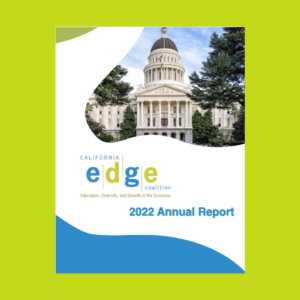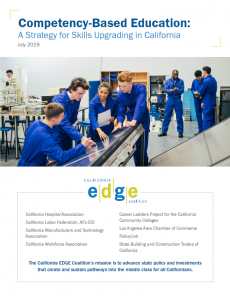
2022 Annual Report
Dear Friends, California has a staggering number of unfilled good jobs and an incredible pool of talent living in poverty or below a living wage.
In 1998, Congress passed the Workforce Investment Act (WIA) to create a system of One>Stop Career Center locations that would provide universal access to employment and training services for a wide range of workers, including adults, low-income youth, and dislocated workers.
This installment of the Workforce Brief Series titled “WIA – Workforce Investment Act” describes the federally-funded system that establishes career centers and business-led workforce boards across the country. To learn more, download the full text of the article here.
California received about $400 million in federal WIA funds in 2011-12. The total is a sharp reduction from the WIA funds received in recent years. In 2009-10, California received $497 million in WIA funds and $470 million in WIA ARRA funds for a total of $967 million. In 2010-11, California received $462 million in WIA funds.
Some local areas combine WIA dollars with other federal and state funds to support One Stop Career Centers and other workforce activities.

2009-2010
2010-2011
2011-2012
California workers earning less then $13.63 per hour
EDD is required to report to the U.S. Department of Labor Employment and Training Administration (ETA) on state and local performance
measures. Accountability reporting is only required for participants who are enrolled in intensive services or training. Performance reporting uses a set of metrics that measure outcomes such as employment, earnings, retention, and attainment of a recognized credential.
The WIA funds target three distinct populations: adults, youth, and dislocated workers. One-Stop Career Centers also provide services to employers, including labor market information, recruitment, and screening.

Dear Friends, California has a staggering number of unfilled good jobs and an incredible pool of talent living in poverty or below a living wage.

EDGE recently partnered with the California Association of Alcohol and Drug Program Executives (CAADPE) to publish a new report, Identifying Barriers to Employment After Substance

Dear Friend, I’m excited to bring you the first annual State of the California EDGE Coalition Report intended to provide you with an overview of our successes

Postsecondary credential attainment is a primary path to economic and social mobility. However, more than 5.5 million Californian adults have some college but no degree and are no longer enrolled. For millions more who are juggling personal and work responsibilities, fitting college into an already hectic life seems impossible.

. A new policy brief released by the California EDGE Coalition examines the ways in which other states are now successfully employing competency-based approaches to teaching and learning which allow students to move flexibly – and often much more quickly – through an educational program that is designed to make sure they know and can do what is expected of graduates.

Many Californians face significant financial, educational and navigational barriers to completing the education and training they need to succeed in today’s labor market. Read our latest publication, Making Certificate and Degree Completion More Affordable and Accessible for Low-Wage Workers